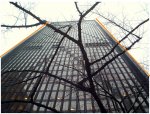Setting a "distant" camera perspective?
Is there a way to set a "distant" perspective in rendering an object? I'm trying to create some large objects but with a "distant" perspective. If I zoom in to an object to make it fill the camera view, it's obvious I'm close to it because of the perspective. And if I enlarge a distant image after rendering, it's grainy. I'm hoping there's a hidden "use distant perspective in render" button somewhere. Setting the canvas to something huge and then backing away from the object doesn't help all that much.
Is there a way to set a "distant" perspective in rendering an object? I'm trying to create some large objects but with a "distant" perspective. If I zoom in to an object to make it fill the camera view, it's obvious I'm close to it because of the perspective. And if I enlarge a distant image after rendering, it's grainy. I'm hoping there's a hidden "use distant perspective in render" button somewhere. Setting the canvas to something huge and then backing away from the object doesn't help all that much.



